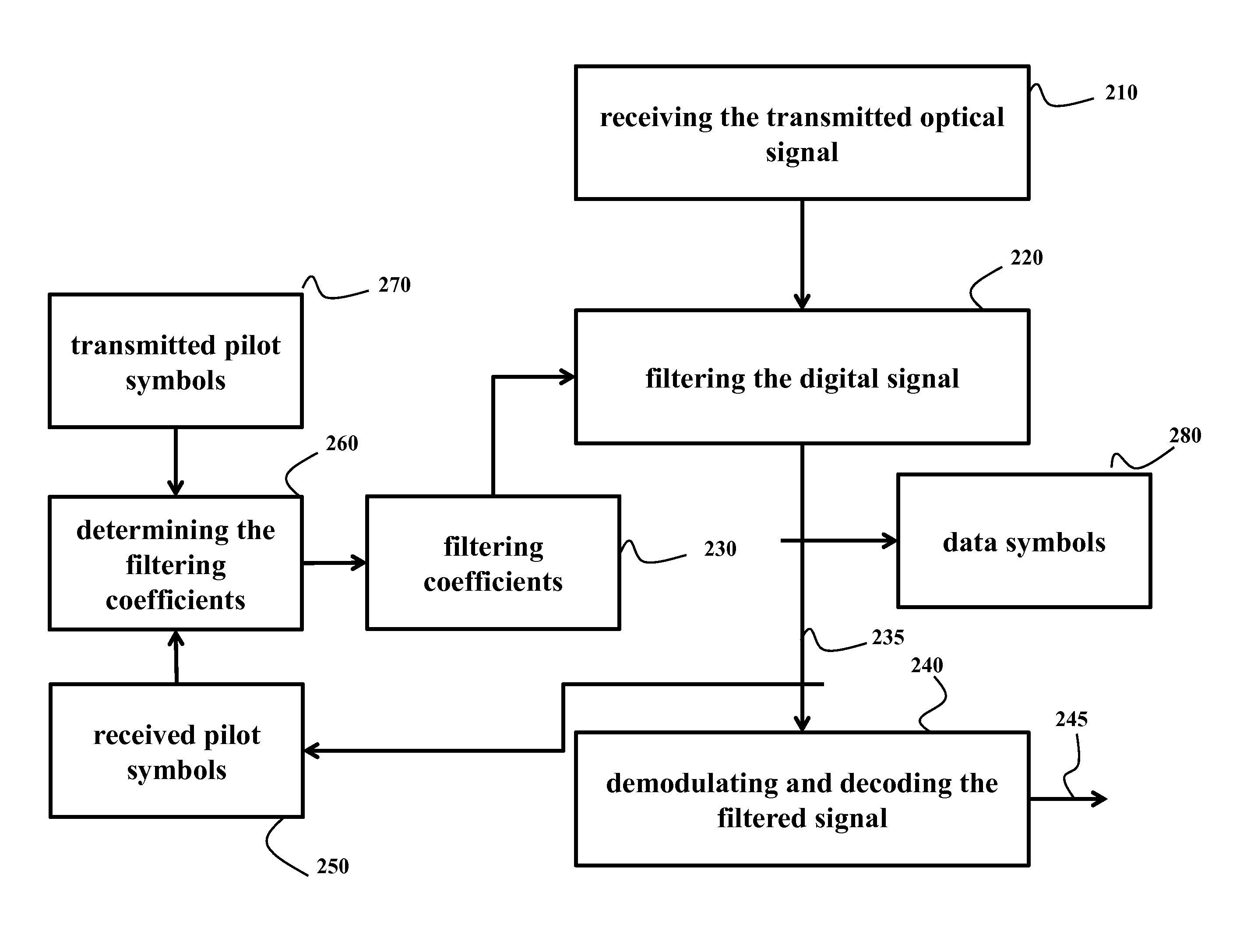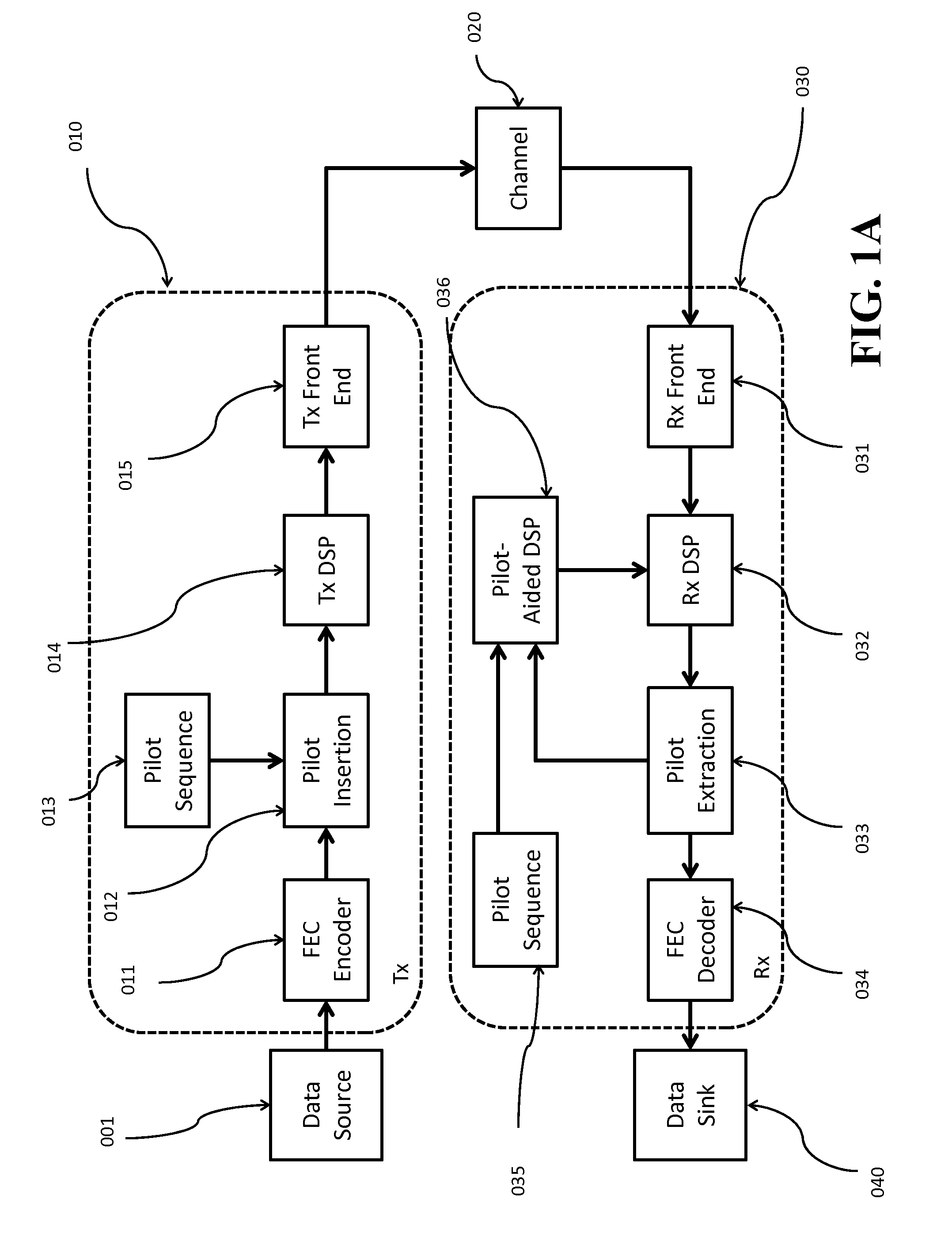Pilot-Aided Coherent Receiver for Optical Communications
a receiver and optical communication technology, applied in the direction of digital transmission, electromagnetic transmission, error prevention, etc., can solve the problems of phase noise and diminish the influence of noise on the received pilot amplitude, and achieve the effect of more accurate equalization of optical signals
- Summary
- Abstract
- Description
- Claims
- Application Information
AI Technical Summary
Benefits of technology
Problems solved by technology
Method used
Image
Examples
Embodiment Construction
[0032]FIG. 1A shows a block diagram of a pilot-aided optical communications system according to some embodiments of the invention. Data from a source (001) are sent to a transmitter (Tx) (010). For example, the data are sent to an optional forward error correction (FEC) encoder (011) and then the data are sent to a pilot insertion block (012), where pilot symbols from a pilot sequence (013) are added at some pre-determined rate to produce a signal including a set of data symbols and a set of pilot symbols with known amplitudes and phases. After insertion of the pilot symbols, the signal undergoes digital signal processing (DSP) (014). In some embodiments, the DSP also performs other functions such as mapping, filtering and pre-equalization. The signal is then sent to the transmitter front end (015), where analog operations such as amplification, filtering, modulation and up-conversion occur, and then transmitted over an optical channel (020) to a receiver (Rx) (030).
[0033]At the rec...
PUM
 Login to View More
Login to View More Abstract
Description
Claims
Application Information
 Login to View More
Login to View More - R&D
- Intellectual Property
- Life Sciences
- Materials
- Tech Scout
- Unparalleled Data Quality
- Higher Quality Content
- 60% Fewer Hallucinations
Browse by: Latest US Patents, China's latest patents, Technical Efficacy Thesaurus, Application Domain, Technology Topic, Popular Technical Reports.
© 2025 PatSnap. All rights reserved.Legal|Privacy policy|Modern Slavery Act Transparency Statement|Sitemap|About US| Contact US: help@patsnap.com



